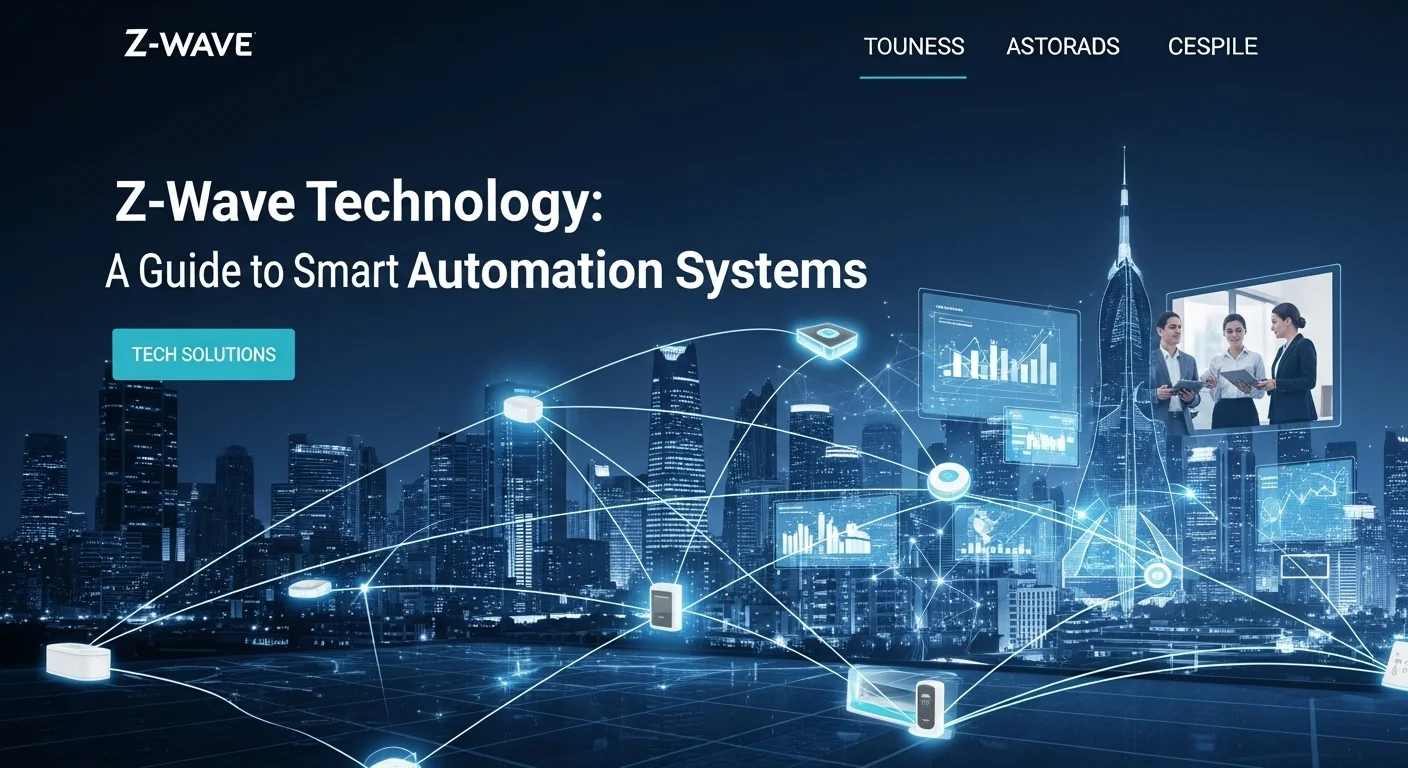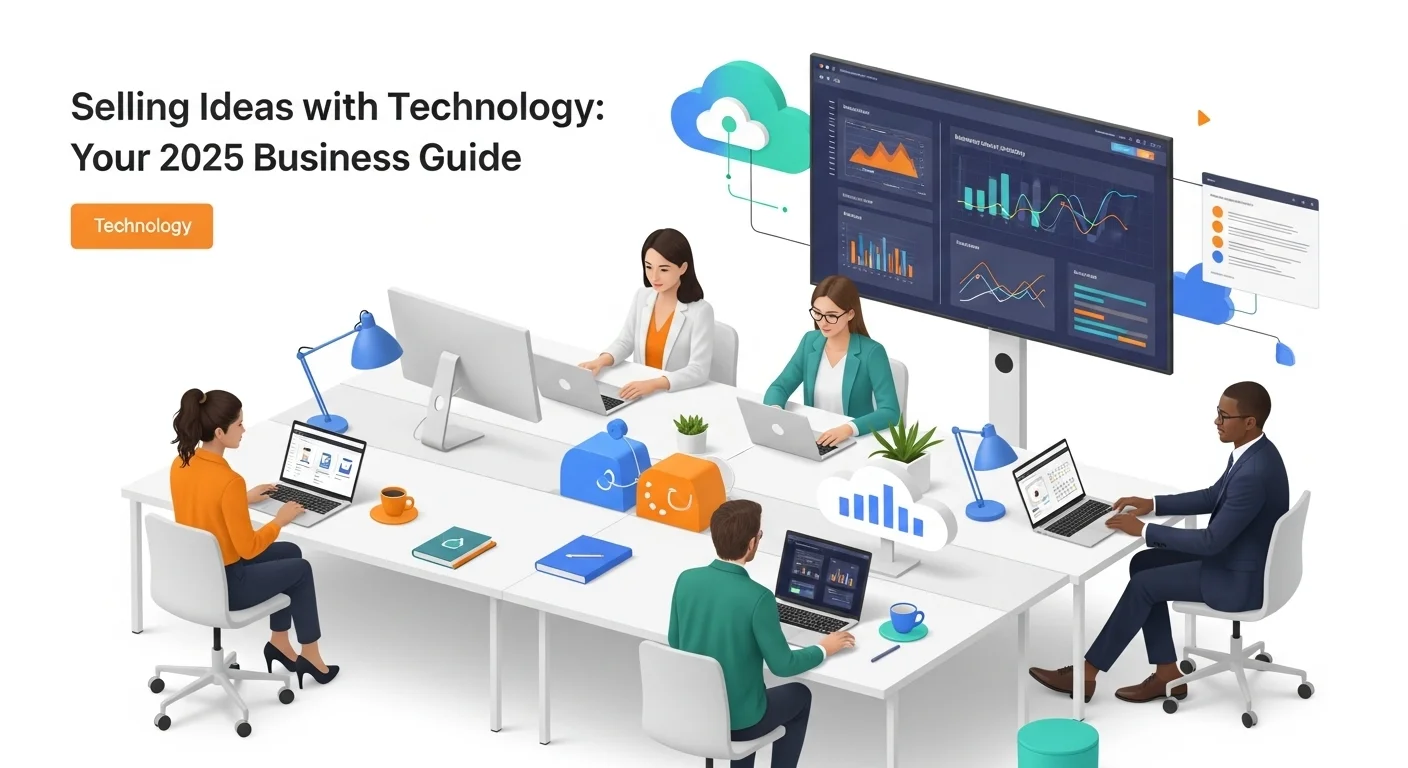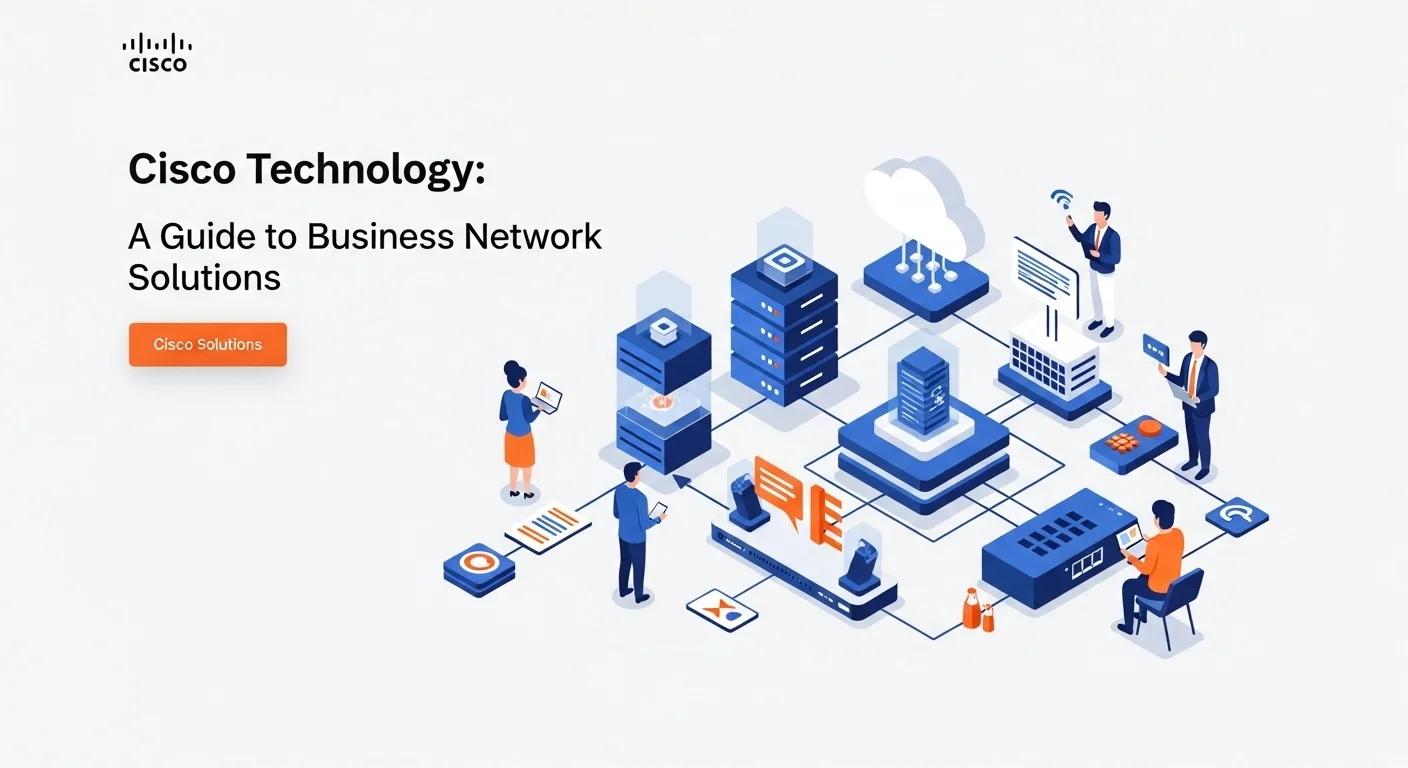Real-World Cloud Service Examples: A Simple Guide to Cloud Tech
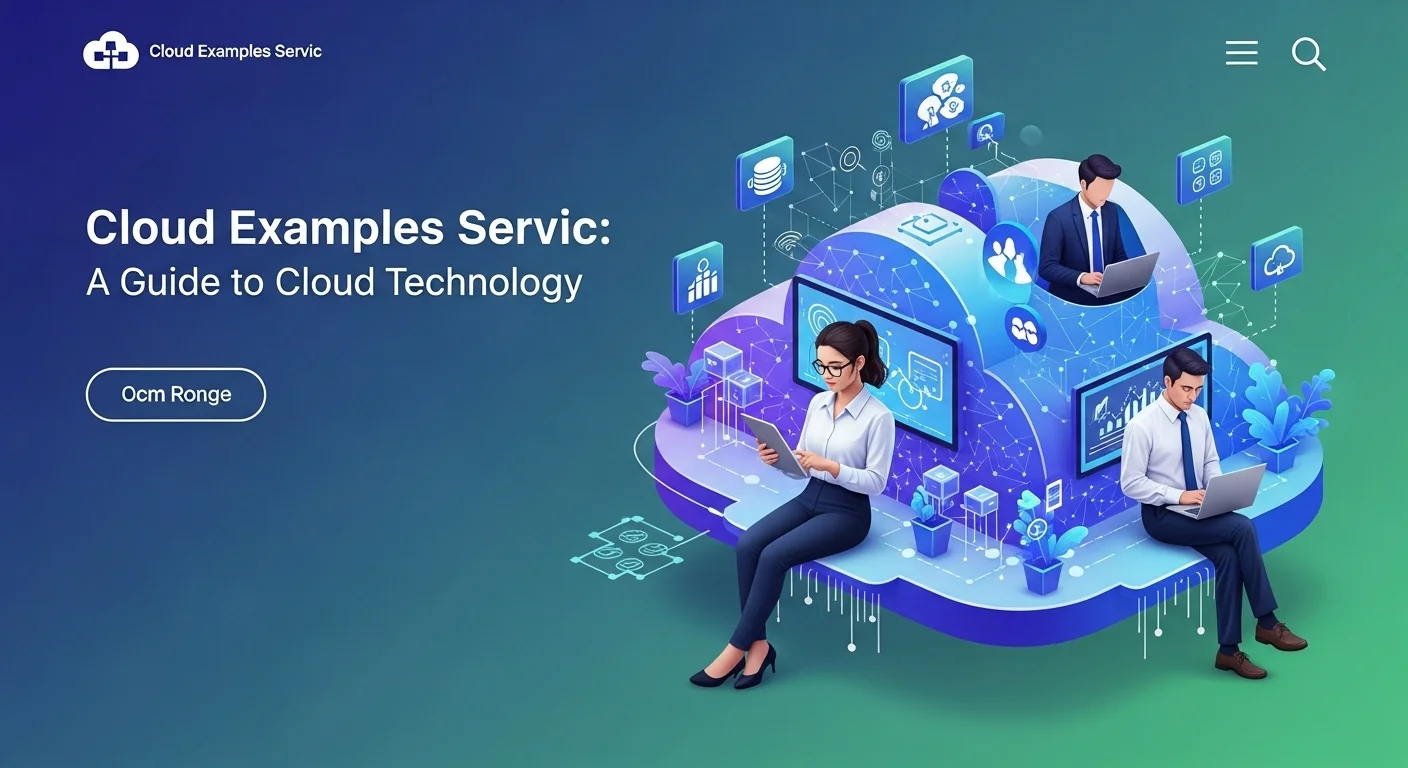
Executive Summary
In the world of tech, 'the cloud' is everywhere, but what does it actually mean for you or your business? I've found that the best way to cut through the jargon is to look at real-world applications. This guide is built on that idea, using practical cloud service examples to make everything click. We'll start by breaking down the three main types of cloud services: Infrastructure as a Service (IaaS), Platform as a Service (PaaS), and Software as a Service (SaaS). I'll share concrete examples for each so you can see exactly how they work and which might fit your needs. We'll also explore the different ways to deploy these services—whether through a public, private, or hybrid cloud—and look at what leading providers like AWS, Azure, and Google Cloud bring to the table. My goal is to give you the confidence and knowledge to make smart decisions about using cloud technology, helping you drive growth and stay competitive.
Table of Contents
What is the Cloud and Why Does it Matter? A Look Through Examples
Table of Contents
In my years working in technology, I've seen 'cloud computing' go from a buzzword to the absolute backbone of modern business. But let's be honest, it can still feel a bit abstract. That’s why I prefer to explain it through real, tangible examples of cloud services. Thinking this way helps strip away the complexity and reveals how vital this technology is. At its heart, cloud computing is like renting computing resources over the internet instead of buying and managing your own hardware. You pay for what you use, whether it's processing power, storage, or databases, from a cloud provider like Amazon Web Services (AWS), Microsoft Azure, or Google Cloud. This shift gives businesses incredible speed, flexibility, and cost savings, letting them innovate faster. From the apps on your phone to the biggest corporate platforms, the cloud is what makes it all possible. To really get it, let's look at the different kinds of cloud services and see them in action.
The Three Main Types of Cloud Services with Examples
Cloud computing is generally broken down into three main models: Infrastructure as a Service (IaaS), Platform as a Service (PaaS), and Software as a Service (SaaS). I like to think of them as different levels of 'do-it-yourself.' Each one meets a different need, and understanding them is key.
1. Infrastructure as a Service (IaaS)
IaaS is the foundation. It's where you rent the basic building blocks of IT—virtual servers, storage, networks, and operating systems—from a cloud provider. This gives you the most flexibility and control, almost like having your own data center but without the hassle of maintaining the physical hardware. You manage the applications and software, while the provider handles the physical infrastructure. A classic example of an IaaS cloud service is Amazon Elastic Compute Cloud (EC2). I've used it countless times to spin up virtual servers for development projects in minutes. Microsoft Azure Virtual Machines is another giant in this space. IaaS is perfect for startups wanting to avoid huge upfront hardware costs or for large companies that need to scale up or down quickly based on demand. When people talk about top cloud service providers, they're often thinking of the big three—AWS, Azure, and GCP—who are masters of IaaS.
2. Platform as a Service (PaaS)
PaaS takes things a step further. It provides a complete platform for you to develop, run, and manage applications without worrying about the underlying infrastructure. The provider handles the servers, networking, and operating systems, so your developers can just focus on building great software. A fantastic example of a PaaS cloud service is Heroku. I've seen small teams launch sophisticated apps on Heroku because it handles so much of the backend work for them. Google App Engine is another great one. These platforms are a developer's best friend, dramatically speeding up the process of getting an application from idea to launch. PaaS perfectly bridges the gap between raw infrastructure and ready-to-use software.
3. Software as a Service (SaaS)
SaaS is the model most people are familiar with, even if they don't realize it. It's software delivered over the internet, usually on a subscription basis. You don't install anything on your computer; you just access it through a web browser. The provider manages everything—the software, the updates, the security, all of it. You use SaaS-based cloud services every day. Think about Google Workspace (Gmail, Google Docs) or Microsoft 365. Salesforce, the CRM giant, is another perfect example. Dropbox for file storage and Slack for team chats are also SaaS. These services have become so popular because they are incredibly easy to use and accessible from anywhere, making our personal and professional lives simpler.
Understanding Cloud Deployment Models
Besides the service models, you also have to decide *how* your cloud will be deployed. The three main options are public, private, and hybrid. Your choice will depend on things like security, cost, and performance needs.
Public Cloud Services Examples
The public cloud is exactly what it sounds like: services offered by a provider over the public internet for anyone to use. You share the hardware with other 'tenants,' which is why it's so cost-effective and scalable. The provider takes care of all the infrastructure. All the big players like AWS, Microsoft Azure, and Google Cloud run massive public clouds. When you stream a show on Netflix, you're tapping into an application running on AWS's public cloud. That’s a perfect example of a public cloud service because it shows how a company can serve millions of people worldwide without owning a single server themselves.
Private Cloud Services Examples
A private cloud is a set of cloud resources used exclusively by one organization. It can be located at your own data center or hosted by a third party, but the key is that it's all yours. This gives you much greater control and security, which is critical for industries like finance or healthcare. A real-world example of a private cloud service isn't a brand name but an implementation. For instance, a major bank might build its own private cloud to run its core systems, keeping all sensitive financial data secure behind its firewall. They might use technology like VMware to create a cloud-like environment for their internal teams, giving them the agility of the cloud with the control of on-premise infrastructure.
Hybrid Cloud
A hybrid cloud is the best of both worlds, mixing a private cloud with a public cloud. Technology connects them so they can share data and applications seamlessly. This gives a business incredible flexibility. For example, I worked with a retail company that ran its main e-commerce site on a secure private cloud. But during huge sales events like Black Friday, they used 'cloud bursting' to tap into the public cloud's massive scale to handle the traffic surge. This way, the website stayed fast and responsive for customers without the company having to own and maintain expensive hardware that would sit idle most of the year. This smart blend of public and private cloud services is what makes the hybrid model so powerful.
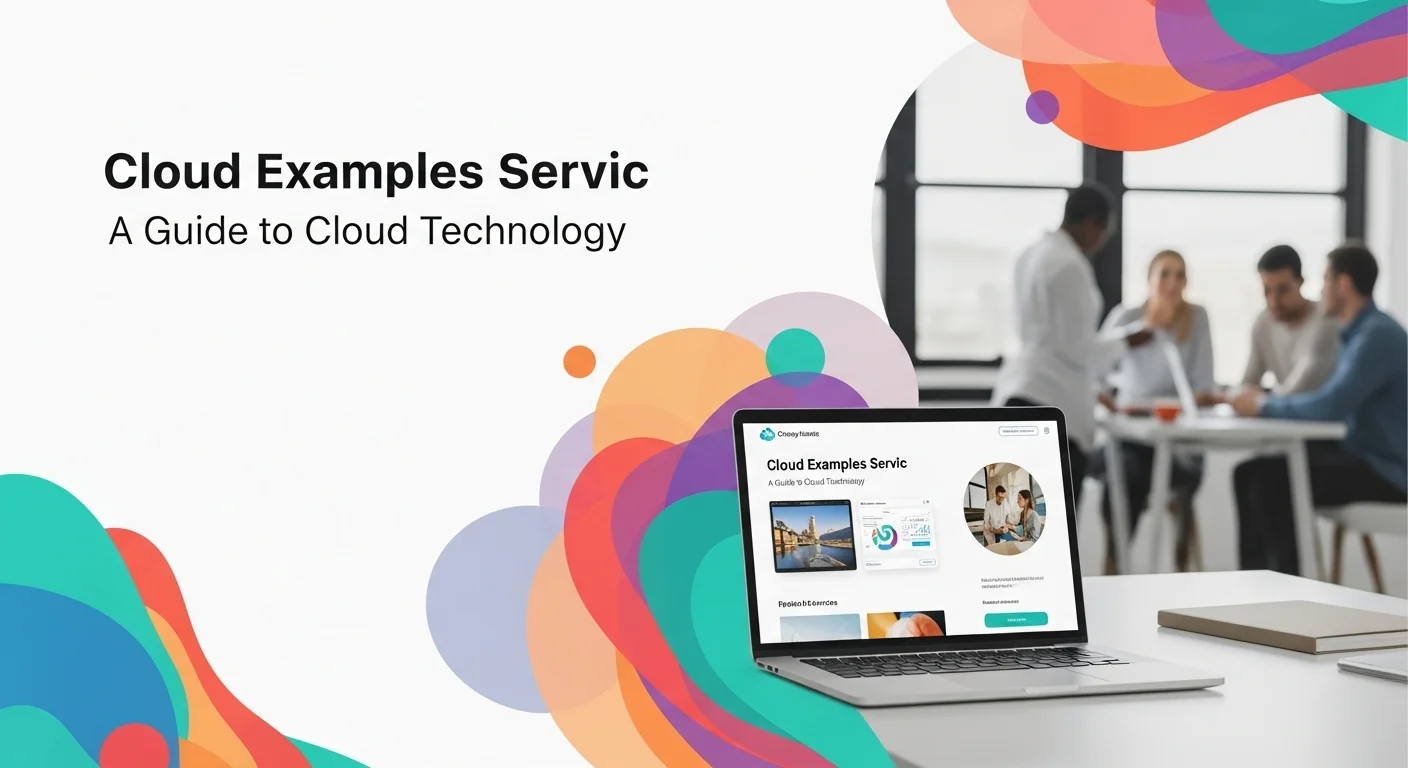
A Complete Guide to Cloud Services in Technology and Business
To really master cloud technology, you need to look beyond the basics and understand the major players, the best ways to adopt the cloud, and the strategies that turn tech into real business value. This part of the guide focuses on the practical application of cloud solutions. We’ll explore the leading cloud service providers, compare their offerings, and walk through the techniques businesses use to move to and succeed in the cloud. My aim here is to equip you with the insights to make strategic decisions that perfectly align your technology with your business goals.
A Deep Dive into Cloud Service Providers
While the cloud market has a few dominant giants, it's also filled with many specialized providers. I always tell people to understand the strengths of the big three before making any decisions, as they set the standard for the industry.
1. Amazon Web Services (AWS)
As the pioneer in the space, AWS has been around the longest and offers an incredibly vast and mature suite of services. I remember first using AWS over a decade ago, and its depth was impressive even then. Its strength is its sheer variety. Core IaaS services like Amazon EC2 (for computing) and Amazon S3 (for storage) are so foundational they've become industry benchmarks. For PaaS, AWS Elastic Beanstalk makes deploying apps a breeze. And for something truly cutting-edge, look at AWS Lambda, a 'serverless' service that runs your code without you ever having to think about a server. It’s no surprise that companies from nimble startups like Airbnb to media giants like Netflix have built their empires on AWS.
2. Microsoft Azure
Azure is the number two provider and has a massive advantage in the corporate world because of its tight integration with other Microsoft products. If your company already runs on Windows Server, Office 365, and Active Directory, moving to Azure feels like a natural next step. It offers a powerful set of services that rival AWS, including Virtual Machines (IaaS) and Azure App Service (PaaS). Where Azure really shines, in my experience, is with its hybrid cloud solutions. Tools like Azure Arc allow businesses to manage their on-premise, multi-cloud, and edge setups from one place. This is a game-changer for large enterprises with complex security and data rules, making it a great example of public and private cloud services working together.
3. Google Cloud Platform (GCP)
Google Cloud Platform (GCP) is a formidable competitor, especially in areas where Google has always excelled: data analytics, machine learning (ML), and container technology. I've worked on projects that used GCP's BigQuery, a serverless data warehouse, and its ability to chew through massive datasets is just stunning. Google also created Kubernetes, the open-source system that has become the gold standard for managing containerized applications. It’s logical, then, that Google Kubernetes Engine (GKE) is one of the best managed Kubernetes services out there. For any company that is data-driven or building modern, cloud-native applications, GCP's advanced tools make it a very compelling choice.
Methods and Techniques for Cloud Adoption
Moving to the cloud isn't just a technical upgrade; it's a strategic shift. There are several proven migration strategies, often called the 'Rs of migration,' that I've used to guide clients through this journey.
Cloud Migration Strategies
The most common paths include:
- Rehosting (Lift and Shift): This is the fastest route. You basically move your applications to the cloud as-is. It’s like moving to a new house without changing any of your furniture. It's quick, but you might not be using all the new features of your home.
- Replatforming (Lift and Reshape): Here, you make a few tweaks to your applications during the move to take better advantage of the cloud. A common example is moving from a database you manage yourself to a managed cloud service like Amazon RDS.
- Repurchasing (Drop and Shop): This involves switching to a new product entirely, typically a SaaS solution. Think of ditching your old on-premise CRM system and moving your team over to Salesforce.
- Refactoring/Re-architecting: This is the most involved approach, where you rebuild your application to be fully cloud-native. It’s the most work, but it also delivers the biggest rewards in performance, resilience, and scalability.
Which strategy you choose really depends on your business goals, timeline, and budget.
Cloud-Native Development and DevOps
For any new application, I always recommend a cloud-native approach. This means designing your apps specifically for the cloud environment, using things like microservices (small, independent services) and containers (like Docker). When you combine this with DevOps practices, which focus on automation and collaboration, you can release new software updates much faster and more reliably. The cloud and DevOps are a perfect match; the cloud provides the flexible, on-demand infrastructure that makes powerful automation possible.
Cost Management and FinOps
One of the biggest lessons I've learned is that cloud costs can get out of hand if you're not careful. This has led to the rise of FinOps, which is all about bringing financial discipline to the cloud's pay-as-you-go model. It’s a culture where engineers, finance, and business teams work together to make smart spending decisions. This means using cost-tracking tools, setting budgets, and making sure you’re not paying for resources you aren’t using. Effective FinOps ensures you get the most bang for your buck from your cloud investment.
Comparing Types of Cloud Services with Examples
To help you choose, let's visualize the difference in what you manage versus what the provider manages:
- On-Premises: You manage everything from the physical building to the application code. It's maximum control, but also maximum responsibility.
- IaaS: The provider handles the physical hardware. You manage the operating system and everything on top of it. Example: Running a custom Linux server on an Azure VM.
- PaaS: The provider manages almost everything. You just bring your application code and data. Example: Deploying a new web app on Heroku.
- SaaS: The provider manages it all. You just use the software. Example: Writing an email in Gmail.
Understanding this spectrum from control to convenience is key. IaaS is for custom, complex jobs. SaaS is for standard business needs. And PaaS is the sweet spot for rapid development. Getting these distinctions right is fundamental to successfully navigating the world of cloud services.

Tips and Strategies to Master Your Cloud Experience
Getting the most out of the cloud is about more than just picking a provider. It's about adopting the right practices, using the right tools, and fostering a mindset of continuous improvement. In this final section, I want to share some practical tips and strategies—things I've learned over the years—to help you optimize your cloud environment, tighten security, and stay ahead of the curve. With these approaches, the cloud can become more than just infrastructure; it can be your engine for innovation.
Best Practices for Cloud Adoption and Management
A successful cloud journey starts with a solid foundation. These principles will help you build a cloud environment that is secure, cost-effective, and perfectly aligned with your business.
1. Develop a Clear Cloud Strategy and Roadmap
Before you move anything, you need a plan. I always start by asking, 'What are we trying to achieve?' Are you cutting costs, becoming more agile, or creating new products? Your answer will shape your entire strategy. Take a hard look at your current systems to decide what should move to the cloud and how. This isn't just an IT decision—get your finance, security, and business leaders in the room. A clear roadmap, often starting with smaller, less critical workloads, helps you build experience and momentum.
2. Prioritize Security from Day One (DevSecOps)
In the cloud, security is a shared job. I like to explain it this way: the provider is responsible for securing the building (the physical infrastructure), but you are responsible for locking your own apartment door (your data, configurations, and access). It's a huge mistake to assume the cloud is secure by default. You need to be proactive. Use a 'defense in depth' strategy with multiple layers of security from Day One. This means strict access controls (IAM), virtual firewalls to manage traffic, and encrypting your data everywhere. Even better, adopt a DevSecOps mindset, which builds security directly into your development process from the very beginning.
3. Implement Robust Cost Management (FinOps)
As I've mentioned, cloud bills can be a nasty surprise without good governance. FinOps isn't just a buzzword; it's essential. The first step is visibility. Use tools like AWS Cost Explorer or Azure Cost Management to see exactly where your money is going. Tag all your resources so you can assign costs to specific projects or teams—this creates accountability. Set up budgets and alerts to catch overspending before it becomes a problem. And regularly check for and shut down idle resources. I’ve seen teams save thousands just by automatically turning off development servers on weekends. Effective FinOps ensures you get the most bang for your buck from your cloud investment.
Essential Business and Technology Tools
The cloud ecosystem is packed with amazing tools. Here are a few types I consider non-negotiable for any serious cloud operation:
- Infrastructure as Code (IaC): Tools like Terraform or AWS CloudFormation let you define your infrastructure in code. This is revolutionary because it makes your setups repeatable, consistent, and version-controlled, just like software.
- Configuration Management: Tools like Ansible, Puppet, and Chef automate how your servers are configured. This prevents 'configuration drift' and ensures your systems are always in the state you expect.
- Container Orchestration: Kubernetes is the king here. It automates how you deploy, scale, and manage applications packaged in containers. It’s the engine behind modern, resilient microservice applications, and all the major cloud providers offer managed versions of it (EKS, AKS, GKE).
- Monitoring and Observability: You can't fix what you can't see. Tools like Datadog, New Relic, and Prometheus are critical for understanding the health of your systems. They give you the metrics, logs, and traces needed to troubleshoot issues and optimize performance.
Real-World Tech Experiences and Case Studies
Seeing how others do it can make these concepts crystal clear. Here are a few scenarios I've seen play out:
- Startup Agility with PaaS: A small startup needed to launch a new app, fast. Instead of wasting weeks configuring servers (IaaS), they used a PaaS like Heroku. They simply pushed their code, and the platform handled the rest. It was a perfect example of using the right type of cloud service to get to market quickly.
- Enterprise Security with Hybrid Cloud: A large financial firm wanted modern analytics but had iron-clad security rules. They built a hybrid cloud. They used a private cloud on-premise for their most sensitive customer data, but for developing new ML models, they used public cloud services from Google. A secure, high-speed connection linked the two, giving them the best of both worlds: security and innovation.
- Global Scale with IaaS: A media company launched a streaming service and had no idea how big the demand would be. They built their platform on AWS IaaS. They used EC2 for video processing, S3 for storing massive video files, and a Content Delivery Network (CloudFront) to stream video smoothly to users worldwide. It showed the raw power of the public cloud to scale globally on a pay-as-you-go basis.
Staying Ahead: The Future of Cloud Computing
The cloud never stands still. Keeping an eye on what's next is key to staying competitive. Here are a few trends I'm really excited about:
- Serverless Computing: This is the next evolution, where developers can just focus on writing code without ever thinking about servers. It’s a dream for efficiency and scale.
- AI and Machine Learning Services: The cloud is making powerful AI accessible to everyone. Providers are offering easy-to-use services for everything from image recognition to predictive analytics.
- Edge Computing: This is about processing data closer to where it's created—at the 'edge' of the network—to reduce lag. The cloud then acts as the central brain for management and heavy-duty analysis.
If you want a quick, brilliant refresher on the basics, I often recommend the Cloud Computing In 6 Minutes video by Simplilearn. It's a fantastic overview. By combining solid practices, the right tools, and an eye toward the future, you can truly unlock the transformative power of the cloud.
Expert Reviews & Testimonials
Sarah Johnson, Business Owner ⭐⭐⭐
This guide on cloud services was helpful, but as a small business owner, I would have loved to see a few more examples tailored to companies my size.
Mike Chen, IT Consultant ⭐⭐⭐⭐
Solid overview of cloud services. It clarified the differences between IaaS, PaaS, and SaaS for me. A couple of the more technical sections could be a little simpler, but overall, very useful.
Emma Davis, Tech Expert ⭐⭐⭐⭐⭐
Fantastic article! As a tech professional, I found the breakdown of providers and migration strategies incredibly thorough and well-explained. It's a great resource.

